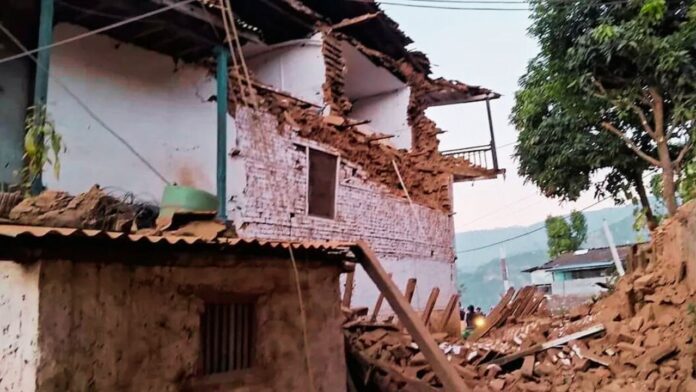A powerful 5.6 magnitude earthquake struck a remote mountainous region of northwestern Nepal late Friday night, leaving at least 157 people dead and hundreds more injured amidst widespread destruction.
The epicenter of the devastating quake was located in the Karnali province, approximately 42 kilometers from the town of Jumla. Striking at the dangerously shallow depth of only 18 kilometers, the intense tremors could be felt as far away as New Delhi, India.
Search and Rescue Efforts Underway Amid Difficult Terrain
Nepal police spokesperson Kuber Kadayat stated that ongoing search and rescue operations remain the top priority, as the extent of the damage is still being assessed across the affected villages nestled in the hilly terrain. Estimates indicate around 90% of homes have collapsed in some of the hardest hit areas.
The Jajarkot and Rukum West districts close to the epicenter suffered catastrophic impacts, with 105 and 52 residents dead respectively. At least another 140 people between the two regions were injured by falling debris and buildings. Dramatic footage reveals multiple houses reduced to piles of rubble. Additionally, you can also read about- Largest Recorded Earthquakes in History [Top 20 List]
Nepal’s Vulnerability to Seismic Activity
Due to Nepal’s location at the convergence of the Indian and Eurasian tectonic plates, earthquakes frequently strike the mountainous nation. The catastrophic 2015 quake registering 7.8 magnitude took the lives of over 9,000 people.
With many villages only accessible by foot and still awaiting aid, officials fear the death toll may continue rising. The remote mountain setting presents immense logistical challenges for response teams attempting to reach affected communities. If you want you can also read- Earth Tremors Mystery Solved: Scientists Make Breakthrough in Understanding
India Vows Support Amid Ongoing Aftershocks
As aftershocks perpetuate fear across Nepal’s villages, India’s Prime Minister Narendra Modi offered condolences and solidarity, pledging readiness to provide assistance. With cold weather setting in, thousands of displaced residents are spending nights in open fields out of concern over aftershock-related collapse of cracked infrastructure.
Aid organizations will need to mobilize quickly to prevent hypothermia and disease outbreaks among vulnerable groups. International response will be key to Nepal’s recovery, as the nation continues to grapple with widespread destruction from the latest in a long history of deadly earthquakes.
You May Find Interest: Deadliest Natural Disasters in History


















![10 Countries With the Best Healthcare in the World [Statistical Analysis] Countries With the Best Healthcare in the World](https://articleify.com/wp-content/uploads/2025/07/Countries-With-the-Best-Healthcare-in-the-World-1-150x150.jpg)










